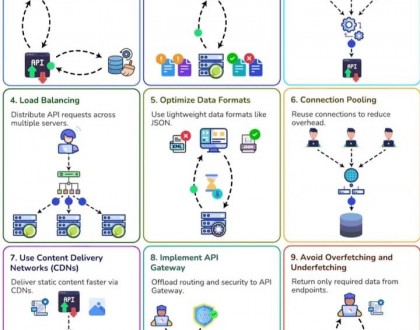RESTful APIs: Best Practices and Implementation
Introduction to RESTful APIs

https://www.freepik.com/premium-photo/api-application-programming-interface-software-development-tool-business-modern-technology-internet-networking-concept_31630818.htm#query=RESTful%20APIs&position=23&from_view=search&track=ais&uuid=d902685f-9b41-4e9e-bf52-9c244fe960c2
In the ever-evolving landscape of web and mobile applications, RESTful APIs stand as a cornerstone for enabling communication between different systems. These APIs, based on Representational State Transfer (REST), facilitate seamless interaction and data exchange. Understanding their significance and implementing them effectively can significantly impact the functionality and success of applications.
Fundamentals of RESTful APIs
At its core, RESTful APIs rely on HTTP methods (GET, POST, PUT, DELETE) to perform operations on resources. The concept emphasizes resource identification through URIs and representations through standard formats like JSON or XML.
Key Principles for Designing RESTful APIs
A critical aspect of RESTful API design is adherence to statelessness and the utilization of a uniform interface. By maintaining stateless communication and employing standardized resource-based URLs, developers ensure scalability and ease of maintenance.
Best Practices for Implementing RESTful APIs
Consistency in endpoint naming conventions and appropriate status codes and error handling mechanisms are pivotal in creating user-friendly APIs. Adhering to these practices streamlines development and enhances usability.
Security Measures in RESTful API Development
Security is paramount in API integration. OAuth, a widely adopted protocol, ensures secure authorization and authentication for APIs. Understanding its implementation helps safeguard sensitive data and prevent unauthorized access.
Performance Optimization in RESTful APIs
Optimizing API performance involves employing caching strategies and leveraging HATEOAS (Hypermedia as the Engine of Application State) to reduce round trips and improve response times, enhancing overall user experience.
Testing and Documentation in RESTful API Development
Comprehensive testing and well-documented APIs are crucial for developers. Rigorous testing guarantees functionality, while detailed documentation simplifies integration for other developers, fostering a collaborative environment.
Real-world Examples and Case Studies
Exploring successful implementations and real-world use cases provides insights into best practices and lessons learned from diverse industries. These examples showcase the versatility and effectiveness of RESTful APIs.
Conclusion
In conclusion, RESTful APIs serve as the backbone of modern applications, fostering interoperability and scalability. Adhering to best practices, understanding OAuth for secure integration, optimizing performance, and emphasizing testing and documentation are key to successful implementation.
FAQs (Frequently Asked Questions)
What makes RESTful APIs different from other types of APIs?
- RESTful APIs use a stateless protocol (HTTP) and emphasize resource-based interactions, promoting scalability and simplicity.
Why is OAuth important in API security?
- OAuth provides a standardized framework for secure authorization and authentication, crucial in safeguarding sensitive data.
How do caching strategies benefit RESTful APIs?
- Caching reduces server load and response times by storing frequently accessed data, enhancing overall API performance.
Why is documentation essential for RESTful APIs?
- Comprehensive documentation simplifies integration for developers, ensuring seamless adoption and reducing errors.
What role do real-world examples play in understanding RESTful APIs?
- Real-world examples offer practical insights, showcasing the effectiveness and versatility of RESTful API implementations.
Recommended Posts

Key Strategies to Boost API Performance in ASP.net
March 10, 2025

Building Secure APIs: Best Practices Every Developer Should Follow
February 18, 2025


